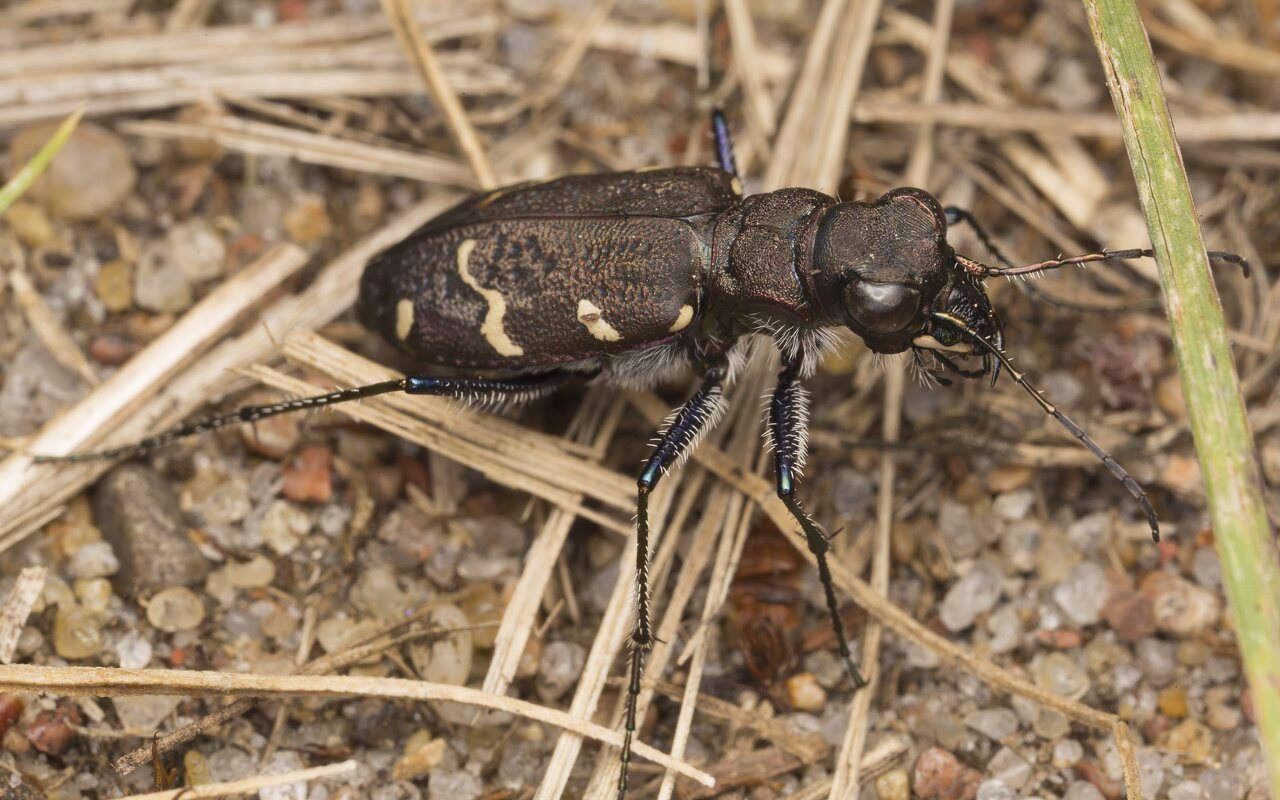
Cicindela sylvatica · miškinis šoklys
- wood tiger beetle, heath tiger beetle
- Skovsandspringer, Skovspringer, Stor sandspringer
- Wald-Sandlaufkäfer, Heide-Sandlaufkäfer
- miškinis šoklys
- meža smilšvabole
- boszandloopkever, zwartbruine zandloopkever, boszandkever
- trzyszcz leśny
- ukbeetles.co.uk/cicindela-sylvatica
- flickr.com/photos/63075200@N07/albums/72157638180071996
- en.wikipedia.org/wiki/Cicindela_sylvatica
- gbif.org/species/4480480
A widespread species occurring throughout the Palaearctic, with the exception of Mediterranean areas and the extreme north, eastward through Russia and China to North Korea. Several subspecies occur in Russia. Across Europe the species has suffered from habitat destruction and abuse but remains locally common in many areas. The Heath Tiger occurs on lowland heaths and coniferous woodland with areas of exposed sandy ground which warm up quickly in the sun. Both adults and larvae use open areas for feeding. Adjacent tall vegetation e.g. heather may be important for the adults to hide among when they are inactive or disturbed. Adults occur from April until early September, breeding in late spring or early summer. They are active in bright sun and run rapidly on exposed substrate and fly readily after prey. The flights are brief and unlikely to lead to dispersal. When alarmed they fly quickly into nearby vegetation. As with all Cicindelinae the larvae live in vertical burrows from which they hunt and in which they will pupate.
The upper surface is evenly dark but for the outer edge of the mandibles and 3 or 4 pale marking on the elytra. The humeral mark may extend along the lateral margin to join the transverse mark in the basal third. The central mark is broadly transverse but does not reach the suture. Most specimens are faintly metallic, especially to the head and pronotum. The large and anteriorly produced labrum is dark and has a central ridge which is unique to this species. The habitus is typical cicindelid with massive eyes, huge, sharp mandibles which are toothed along the inner edge, and long, agile legs adapted for rapid movement. The elytra are punctured over much of the surface and bear a random series of fovea beside the suture which extends to the apex. The legs are metallic and bear white setae. Most of the ventral surface is metallic blue and sparsely pubescent. Males have dilated basal segments on the pro-tarsi.
Dydis 15-17 mm. Kūno viršutinė pusė bronziškai juoda, šilko blizgesio. Antsparniai su baltu piešiniu. Blauzdos ir letenos žalios, vario atspalvio. Antsparnių piešinys panašus į baltalūpio šoklio, tačiau miškinio šoklio antsparniai daug tamsesni ir pats vabalas stambesnis. Tai didžiausias Lietuvos šoklys. Dažnas pušynuose, smėlėtose vietose, ypač miško keliuose. Skraido Gegužės – Liepos mėnesiais.
‥
0 comments
Add a comment